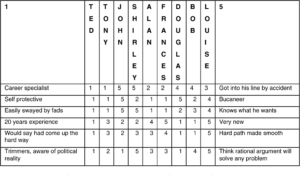College Board Backtracks on ‘Adversity Score’

The College Board abandoned its plan to capture the socioeconomic profile of students with a single score, opting instead to provide admission officers with bulleted information about a student’s high school and neighborhood and make public the methodology it uses to do so.
The changes come after the SAT provider received blow back about its plan to provide colleges and universities a so-called “adversity score,” an initiative the College Board previously called an “Environmental Context Dashboard” and has now rebranded as “Landscape.”
“We listened to thoughtful criticism and made Landscape better and more clear,” David Coleman, CEO of the College Board, said in a statement. “Landscape provides admissions officers more consistent background information so they can fairly consider every student, no matter where they live and learn.”
According to the College Board, admissions officers who are testing Landscape say they lack information about high schools for about 25% of all applications, and the consistent data allows them to more fairly consider each student.
The redesigned initiative will include most of the same inputs as originally conceived, including, for example, neighborhood crime rates, education levels and average family income.
Some in the higher education community were hopeful the College Board’s initial plan to assign students a score would result in more equitable admissions at schools that depend on the college entrance exam. But others characterized the effort as a PR stunt by a testing company that’s trying to remain relevant at a time when colleges and universities are considering test optional admission policies by exploiting the national conversation about equity in higher education in the wake of the college admissions scandal.
The decision to include a profile of students’ socioeconomic background on the SAT is just the latest major change at the College Board to more directly address critics’ long-standing concerns over unequal access and preparation for its college entrance exam and suite of AP tests.
The College Board recently launched a sweeping redesign of the SAT, which was regulated last year to more than 2.1 million students in the graduating class of 2018 – the largest cohort in the test’s history. The growth was largely due to its partnership with 10 states and the District of Columbia to give the SAT to all public high school students for free, a move aimed squarely at increasing access to historically underserved students.
“UCLA and other UC campuses have considered applicants’ context for many years,” Youlonda Copeland-Morgan, vice provost of enrollment management at the University of California, Los Angeles, said in a statement in support of the College Board. “We are excited about the research and additional information Landscape will provide us as we continue our efforts to better assess the full range of academic and personal achievements of all students applying for admission.








